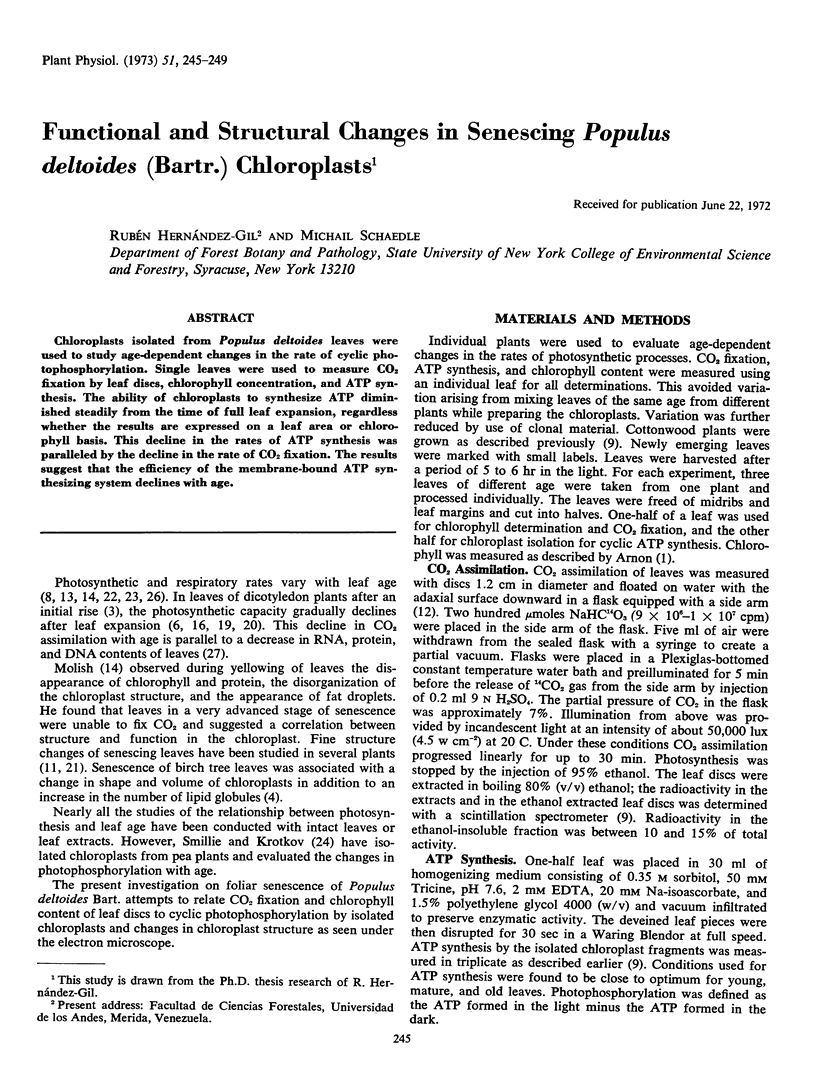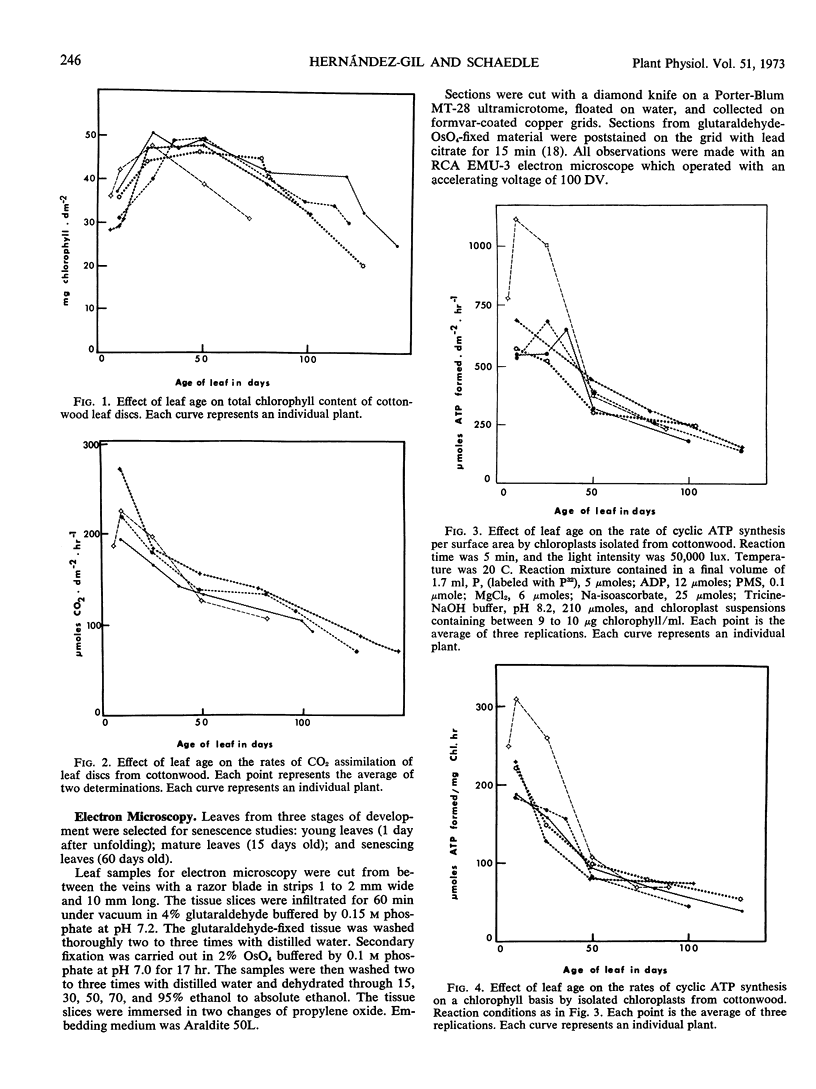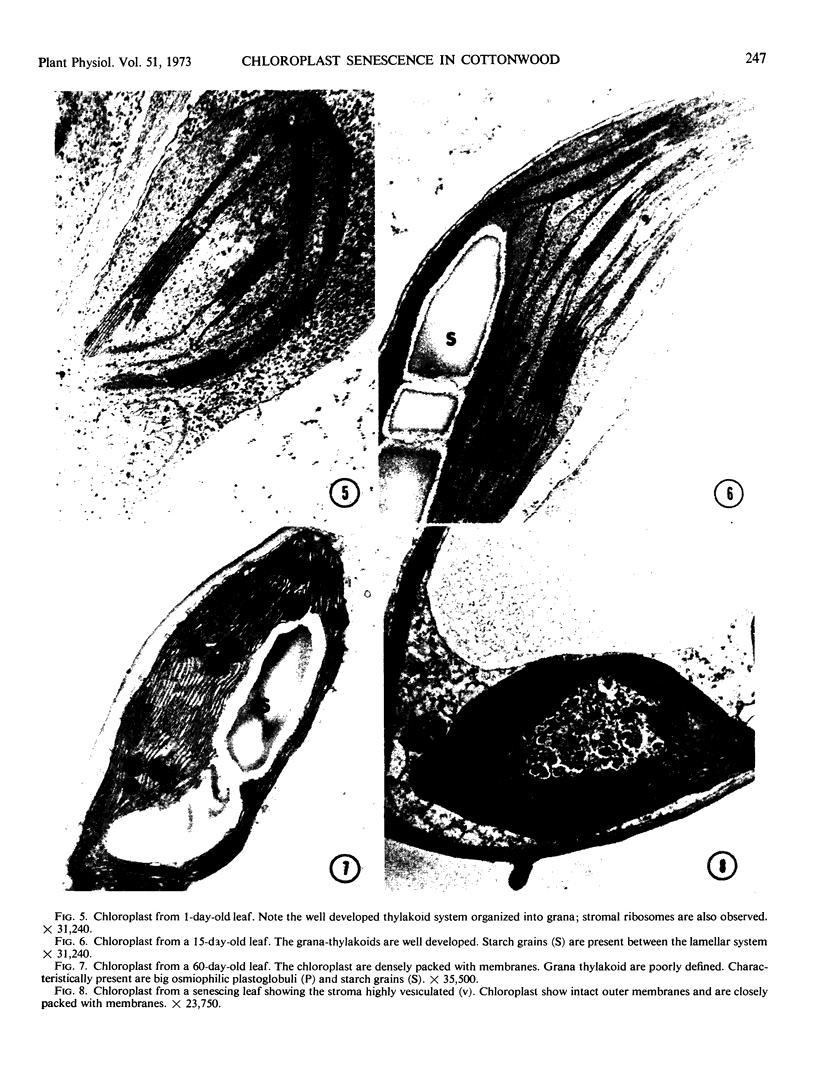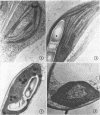Abstract
Chloroplasts isolated from Populus deltoides leaves were used to study age-dependent changes in the rate of cyclic photophosphorylation. Single leaves were used to measure CO2 fixation by leaf discs, chlorophyll concentration, and ATP synthesis. The ability of chloroplasts to synthesize ATP diminished steadily from the time of full leaf expansion, regardless whether the results are expressed on a leaf area or chlorophyll basis. This decline in the rates of ATP synthesis was paralleled by the decline in the rate of CO2 fixation. The results suggest that the efficiency of the membrane-bound ATP synthesizing system declines with age.
Full text
PDF




Images in this article
Selected References
These references are in PubMed. This may not be the complete list of references from this article.
- Arnon D. I. COPPER ENZYMES IN ISOLATED CHLOROPLASTS. POLYPHENOLOXIDASE IN BETA VULGARIS. Plant Physiol. 1949 Jan;24(1):1–15. doi: 10.1104/pp.24.1.1. [DOI] [PMC free article] [PubMed] [Google Scholar]
- DORNER R. W., KAHN A., WILDMAN S. G. The proteins of green leaves. VII. Synthesis and decay of the cytoplasmic proteins during the life of the tobacco leaf. J Biol Chem. 1957 Dec;229(2):945–952. [PubMed] [Google Scholar]
- Freeland R. O. EFFECT OF AGE OF LEAVES UPON THE RATE OF PHOTOSYNTHESIS IN SOME CONIFERS. Plant Physiol. 1952 Oct;27(4):685–690. doi: 10.1104/pp.27.4.685. [DOI] [PMC free article] [PubMed] [Google Scholar]
- Hernández-Gil R., Schaedle M. Photophosphorylation and Carbon Dioxide Fixation by Chloroplasts Isolated from Populus deltoides. Plant Physiol. 1972 Sep;50(3):375–377. doi: 10.1104/pp.50.3.375. [DOI] [PMC free article] [PubMed] [Google Scholar]
- Homann P. H., Schmid G. H. Photosynthetic reactions of chloroplasts with unusual structures. Plant Physiol. 1967 Nov;42(11):1619–1632. doi: 10.1104/pp.42.11.1619. [DOI] [PMC free article] [PubMed] [Google Scholar]
- Kalberer P. P., Buchanan B. B., Arnon D. I. Rates of photosynthesis by isolated chloroplasts. Proc Natl Acad Sci U S A. 1967 Jun;57(6):1542–1549. doi: 10.1073/pnas.57.6.1542. [DOI] [PMC free article] [PubMed] [Google Scholar]
- Martin C., Thimann K. V. The role of protein synthesis in the senescence of leaves: I. The formation of protease. Plant Physiol. 1972 Jan;49(1):64–71. doi: 10.1104/pp.49.1.64. [DOI] [PMC free article] [PubMed] [Google Scholar]
- REYNOLDS E. S. The use of lead citrate at high pH as an electron-opaque stain in electron microscopy. J Cell Biol. 1963 Apr;17:208–212. doi: 10.1083/jcb.17.1.208. [DOI] [PMC free article] [PubMed] [Google Scholar]
- Ramírez J. M., Campo F. F., Arnon D. I. Photosynthetic phosphorylation as energy source for protein synthesis and carbon dioxide assimilation by chloroplasts. Proc Natl Acad Sci U S A. 1968 Feb;59(2):606–612. doi: 10.1073/pnas.59.2.606. [DOI] [PMC free article] [PubMed] [Google Scholar]
- Smillie R. M. Photosynthetic & respiratory activities of growing pea leaves. Plant Physiol. 1962 Nov;37(6):716–721. doi: 10.1104/pp.37.6.716. [DOI] [PMC free article] [PubMed] [Google Scholar]
- Wiessner W. Relative quantum yields for anaerobic photoassimilation of glucose. Nature. 1966 Oct 22;212(5060):403–404. doi: 10.1038/212403a0. [DOI] [PubMed] [Google Scholar]



